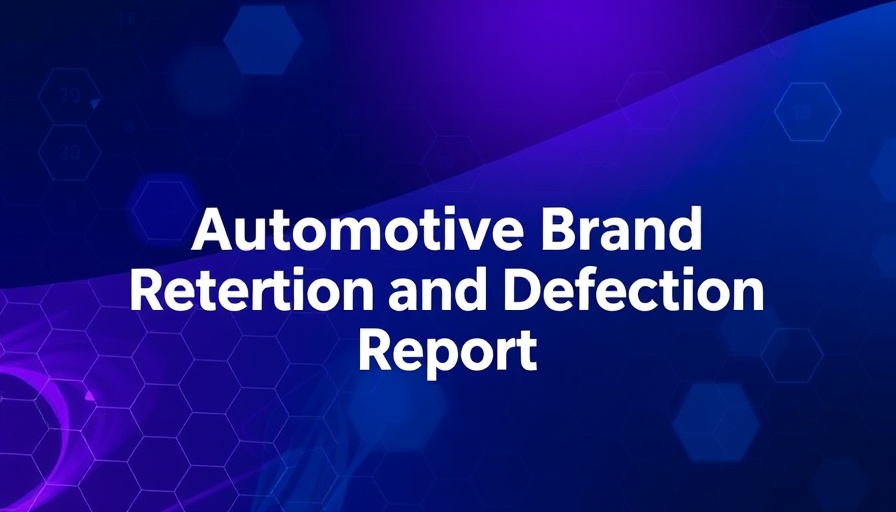
Understanding Brand Loyalty: A Double-Edged Sword in Automotive
Recent insights from the Reynolds and Reynolds report reveal a mixed bag in automotive brand loyalty for 2024. On the surface, brand retention has seen a minimal increase, rising to 43.9%. However, the report also highlights troubling signs of loyalty erosion, with a significant number of brands experiencing declines in customer retention. For dealership owners and GMs, these statistics are not just numbers—they signify shifting dynamics in consumer behavior.
The focus on brand loyalty is more critical than ever following the latest J.D. Power Automotive Brand Loyalty Study. Here, brand loyalty metrics indicate that while traditional leaders like Toyota and Honda have maintained their stronghold, newer players and fluctuations in consumer preferences may challenge this status quo.
The Complex Landscape of Consumer Retention
It is particularly telling that only six brands managed to retain over 50% of their customers last year. Discounts and the rise in inventory levels have created an environment where consumers are more inclined to explore options beyond their usual brand. The statistics revealing that 24 out of 38 brands have seen drops in retention should serve as a wake-up call for automotive companies invested in nurturing customer loyalty.
Interestingly, truck ownership has seen a marked increase in brand retention rates. The report notes that 74.1% traded their truck for another truck, indicating that certain consumer segments, particularly truck owners, may be more brand-loyal, potentially due to the emotional connection tied to their vehicles.
What These Trends Mean for Dealerships
Dealerships should heed the findings. The loyalty erosion signals a shift in customer engagement strategies that may require innovative approaches. Companies need to create unique offerings or enhance customer experiences to reinforce loyalty. As noted in the J.D. Power study, the ability to provide desired vehicles is fundamental to retaining customers, and dealers must prepare to meet evolving consumer demands.
Regional Variations Reveal Opportunities for Marketing
The geographical breakdown of brand retention rates also presents valuable insights. The Northeast showcases the highest retention rate at 47.9%, while the Southwest falls behind at 42.1%. For auto sales training, targeting marketing efforts according to these regional disparities could lead to more effective campaigns. In the Midwest, where domestic sales reign supreme with 56.2% of purchases, dealerships should consider content that resonates with local preferences.
Ultimately, understanding the factors influencing brand loyalty will be essential for automotive dealers looking to thrive in a competitive marketplace. Companies must leverage data-driven approaches to anticipate market changes and align their strategies to keep pace with consumer expectations.
 Add Row
Add Row  Add
Add 

 Add Row
Add Row  Add Element
Add Element 




Write A Comment